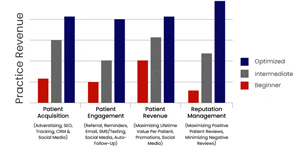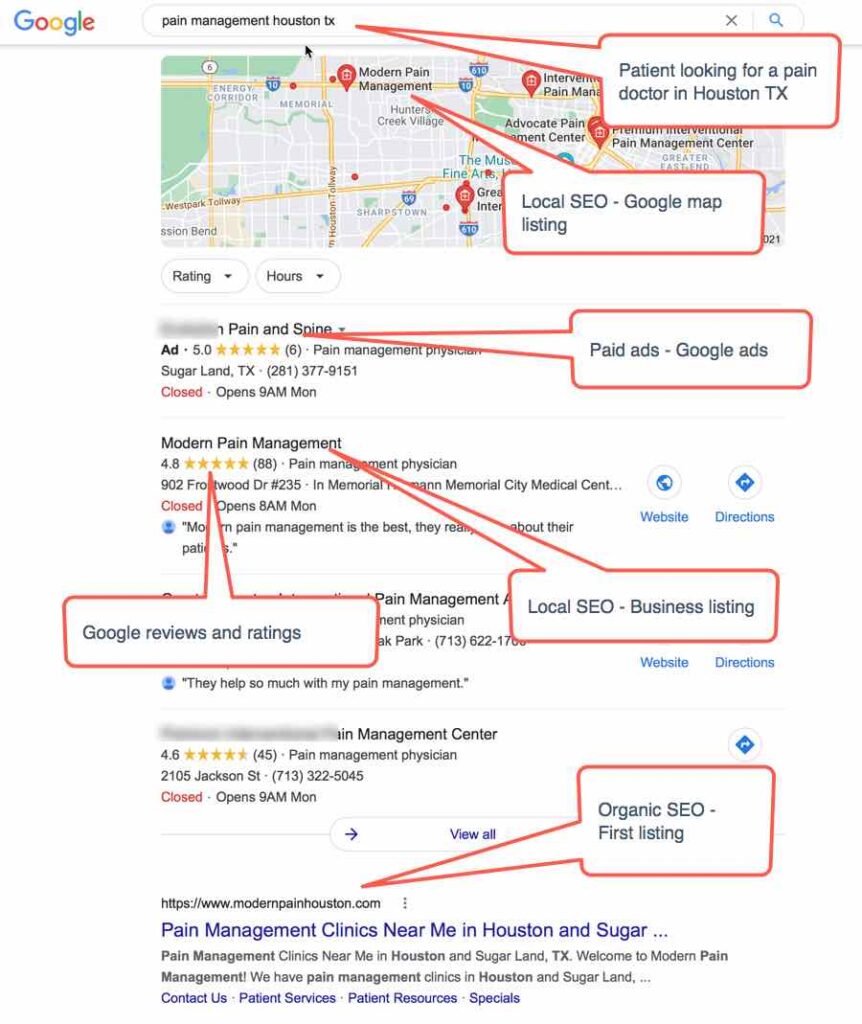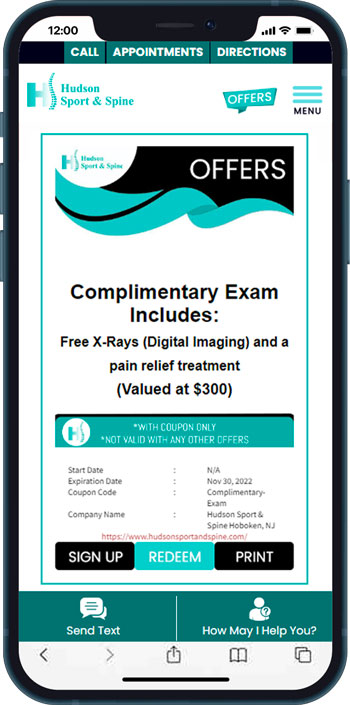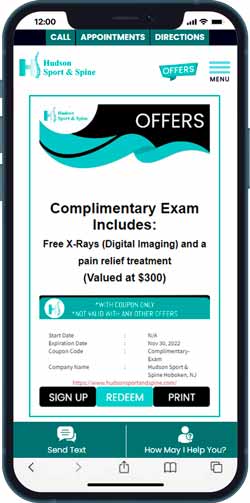Pain Management & Pain Relief Marketing Examples & Marketing Plan
Pain management and pain relief is a very complex and evolving area of medicine, however medical marketing for pain management physicians and practices does not have to be complex. PatientGain’s solutions costs $799 to $1399/mon and is used by the top clinics in the USA & Canada. Good examples for pain management marketing and advertising could include: highlighting patient testimonials about improved quality of life, focusing on specific pain conditions with targeted messaging, emphasizing a multidisciplinary approach to treatment, promoting non-invasive options like physical therapy, utilizing educational content to raise awareness about pain management, and showcasing the expertise of the medical team while maintaining sensitivity and avoiding overly dramatic claims.


Pain management physicians help many people across the country with conditions that cause chronic pain. These debilitating conditions can severely impact the overall quality of life and even other medical issues or even substance abuse. The trained professionals at a pain management clinic can help these patients using safe and proven methods. As pain management becomes a topic discussed more and more on the news and in communities, more pain management clinics have opened in many areas. As a result, competition can be heavy in a community between these different practices. An effective medical marketing plan for pain management physicians is needed if they want their business to succeed and grow. Below are some marketing tactics that many of these types of practices have used to increase their patient count.


Pain Management Doctors are focused on providing pain relief to millions of patients in USA and Canada. Physicians focus on different approaches to change patients quality of life by reducing and improving your daily functioning. Physicians use safe and effective comprehensive treatment plans that reduce risks and maximize benefits for patients. Pain management providers may practice any of these approaches;
1. Interventional Pain Management
2. Non-Interventional Pain Management
3. Integrative Pain Management
4. Regenerative Pain Management
5. Chiropractic Pain Management or a combination of these.
Key Differences Between Pain Management Approaches
| Approach | Treatment Type | Common Techniques | Best For |
|---|---|---|---|
| Interventional Pain Management | Minimally invasive, procedural | Injections, nerve blocks, spinal stimulators | Chronic pain, sciatica, arthritis |
| Non-Interventional Pain Management | Non-invasive, conservative | Medications, physical therapy, behavioral therapy | Mild to moderate pain, first-line treatment |
| Integrative Pain Management | Holistic, multi-disciplinary | Acupuncture, herbal medicine, mindfulness, physical therapy | Fibromyalgia, migraines, neuropathy |
| Regenerative Pain Management | Biologic, tissue repair | PRP therapy, stem cell therapy, prolotherapy | Joint pain, osteoarthritis, sports injuries |
| Chiropractic Pain Management | Hands-on, manual therapy | Spinal adjustments, soft tissue therapy, posture correction | Back pain, sciatica, headaches |
A well-executed pain management marketing strategy blends digital outreach, local engagement, educational content, and reputation management to attract new patients, increase brand awareness, and improve patient retention. Below are expanded, real-world examples demonstrating proven marketing and advertising strategies for pain clinics.
1. Google Ads for Instant Patient Appointments
Strategy: Use Google Ads to target high-intent searches related to pain relief and treatment.
Example 1: Search Ads for Immediate Bookings
- Ad Copy:
- “Struggling with Chronic Pain? Personalized Treatment Available!”
- “Top Pain Management Doctor in [City] – Same-Day Appointments.”
- Targeting:
- Keywords: “pain clinic near me,” “sciatica treatment specialist,” “back pain doctor,” “pain relief injections.”
- Demographics: Adults 35+, geo-targeted within 20 miles of the clinic.
Example 2: Google Display Ads for Retargeting
- Strategy: Retarget website visitors who didn’t book an appointment with follow-up display ads.
2. Facebook & Instagram Ads for Brand Building and Awareness
Strategy: Use social media advertising to engage potential patients through visual storytelling and testimonials.
Example 1: Video Ad Featuring Patient Testimonial
- Ad Copy:
- “Pain-Free Living is Possible! See How [Patient Name] Found Relief at [Clinic Name].”
Example 2: Carousel Ad Showcasing Treatment Options
- Ad Layout:
- Image 1: “Chronic Back Pain? We Offer Epidural Injections.”
- Image 2: “Knee Pain Holding You Back? PRP Therapy Can Help.”
- Image 3: “Arthritis Pain? Non-Surgical Treatments Available.”
3. Local SEO & Google Business Profile Optimization
Strategy: Optimize for “pain management near me” searches to increase visibility in local search results.
Example 1: Location-Based SEO Strategy
- Optimized Service Pages:
- “Neck Pain Specialist in [City]”
- “Best Pain Doctor for Sciatica in [City]”
Example 2: Google Business Profile Optimization (GMB)
- Action Steps:
- Added clinic photos, patient reviews, appointment booking links, and updated contact details.
4. YouTube for Educational Marketing
Strategy: Create informational content that positions the clinic as an expert in pain relief.
Example 1: Create treatment pages with infographics
- Blog Titles:
- “Top 5 Treatments for Chronic Back Pain Without Surgery”
- “How Epidural Injections Work for Sciatica Relief”
Example 2: YouTube Educational Series
- Video Topics:
- “What to Expect at a Pain Clinic Consultation”
- “PRP Therapy vs. Cortisone Shots – What’s Right for You?”
5. Email Marketing for Patient Retention
Strategy: Send automated emails and texts for appointment reminders and treatment updates.
Example 1: Automated Follow-Up Emails
- Email Subject: “Your Personalized Pain Relief Plan – What’s Next?”
Example 2: Monthly Email marketing with educational topics
- Message: “Reminder: Your Pain Management Appointment is Tomorrow at 10 AM. Reply ‘YES’ to Confirm.”
6. Referral Programs for Word-of-Mouth Growth
Strategy: Incentivize patients to refer family and friends to the clinic.
Example 1: Patient Referral Offer
- Promo: “Refer a Friend & Get $50 Off Your Next Treatment!” – This is only for cash-pay patients – as there can be issues with referrals if insurance is involved or if you live in a state where medical referrals are not allowed.
7. Community Outreach & Partnerships
Strategy: Build local partnerships and host free pain education seminars.
Example 1: Free Chronic Pain Workshop
- Event: “Understanding Chronic Pain: Non-Surgical Treatment Options”
Example 2: Physical Therapy & Chiropractic Partnerships
- Strategy: Partner with physical therapists & chiropractors for cross-referrals.
8. Reputation Management & Google Reviews
Strategy: Encourage satisfied patients to leave online reviews for credibility.
Example 1: Email Request for Reviews
- Email Subject: “Help Others Find Relief – Leave a Google Review!”
9. Direct Mail Marketing for Senior Patients
Strategy: Send postcards and brochures targeting older patients with chronic pain.
Example 1: Postcard Campaign
- Message: “Relief from Chronic Pain Starts Here – Call for a Consultation Today!”
10. TikTok & Instagram Reels for Quick Patient Education
Strategy: Create short-form videos on social media.
Example 1: TikTok Stretching Series
- Video: “3 Stretches to Reduce Sciatica Pain in Under 2 Minutes.”
Conclusion
A multi-channel marketing approach combining SEO, PPC ads, content creation, social media, email marketing, and local outreach leads to consistent patient growth for pain management clinics.
By implementing these proven strategies, pain clinics can:
- Increase new patient inquiries
- Boost appointment bookings
- Improve patient retention & referrals
- Strengthen brand authority in pain management
With the right strategy and execution, pain clinics can expand their reach and transform patient care.
Example of SEO for a pain management practice

How can a medical engagement chatbot help a pain management clinic get more patients?
Unlike an emergency room, a pain management clinic is not open 24 hours a day, 365 days out of the year. These clinics are more of a “9 to 5” business with regular business hours on weekdays and some having limited weekend availability. Chronic pain, however, does not abide by a schedule that only appears during regular business hours. Patients with chronic pain may need to start researching their medical options after hours, overnight, or during the holidays. No matter how well written a website might be, a portion of web visitors will not understand something or need clarification or assistance to accomplish a task. Instead of calling, leaving a message, and playing phone tag with a pain management clinic, they can get help from a medical engagement chatbot!
A chatbot is just a simple program embedded into a website with prewritten questions and answers to help visitors find information or accomplish simple tasks. They appear on every page, often greet a visitor, and remain available if needed. For any question or task, they can not assist with, chatbots will take the contact information of the visitor, their question and put it into a dashboard for staff to address as soon as they can. For medical engagement chatbots, this dashboard must be is HIPAA compliant to protect any personal health information that might be transmitted.
As for what questions and tasks a chatbot should assist with, it is best to program the most common and frequent questions the front desk staff engages with throughout the week. The goal behind a chatbot is to reduce the number of people contacting the clinic for assistance with easy issues. This will, in turn, free up time for the front desk staff to assist other patients with more challenging problems. To create this list of things to be programmed into a chatbot, sit down with those staff members, and talk about the common questions they answer or things they help with when patients call. This should be a good starting point for a well-rounded and helpful list of questions and tasks to program into a chatbot.
How can text messaging help attract more patients to a pain management clinic?
Text messaging is a very versatile tool available to pain management clinics, and many other healthcare businesses use it to their advantage. Just about everyone has a cellphone with text message capability available to them. Text messages, by and large, have a higher open rate than emails do and a higher engagement rate. While they are a little more expensive than emails to send, there can be a significant return on investment in using text messages if appropriately used.
One way to use text messages is to send marketing messages to a pain management clinic’s current patients. Unlike emails, there is a limited amount of space available to send out a message to patients, and many times the message will only contain text. While the pressure to design a flashy message is less, the message needs to be short, engaging, have an excellent call to action, and be between 160 and 260 characters, including spaces and punctuations. Every message should include either an URL for a patient to learn more information or to make an appointment or a phone number they can call. Be careful when sending a phone number in a text message, or do you might find your front desk staff overwhelmed with phone calls from patients with questions, especially if you just sent out a text message to thousands of them.
Another way text messaging can be used is to give patients the ability to text the pain management clinic with questions. Studies show that many people prefer texts to phone calls from friends, family, and even businesses. Texting can often be accomplished faster than placing a phone call or writing out an email. A return text message is more often read than an email that could end up in a spam folder or a “business” folder in email providers. Text messaging, however, must remain HIPAA compliant. Any texts sent to a clinic can not go to a cellphone passed around the front desk. While texts sent between phones are generally encrypted, a cell phone is a pain management clinic with no user management or auditing capabilities will not be HIPAA compliant. Instead, texts sent to a clinic need to be stored on a HIPAA compliant dashboard for selected staff to address and message back. The team should not send any personal health information back to patients to their cell phone. It is also not HIPAA compliant.
When engaging in text message marketing, under no circumstance should a pain management clinic buy or trade patient lists with other entities. This is, by and large, illegal unless you explicitly tell patients you might send their information to other people. It is against federal law to message someone via text without their permission for promotional purposes.
Why should a pain management physician’s website be mobile-friendly?
Many website designers have noticed a continuing trend over the last decade: more and more website traffic comes from mobile devices. As phones become more advanced and the cellphone networks increase their connection speed, it is easier than ever to explore a website from a mobile device. A pain management clinic that does not have a mobile-friendly website is leaving a lot of potential patients out there to be snatched up by competitors. Mobile-friendliness is so important that Google will penalize websites in mobile search in many cases to the point where it will not show up in results. Any healthcare entity can no longer ignore mobile compatibility.
The best way to have a mobile-friendly site is to have a responsive website. A responsive website is a site that “responds” to the size of the screen it is being displayed on. It detects the size and then rearranges itself, changes text size, and moves elements around to fit on that screen. While this rearrangement is automatic, it needs to be set up and checked by a website designer to ensure everything is placed correctly. A responsive website that does not put things correctly will look unprofessional, and conversion rates will plummet. Even if items are arranged to fit a screen, a site also needs to maintain its functionality. Everything available on the desktop version needs to be accessible on the mobile version; otherwise, a site will again lose conversions.
Finally, a tremendous factor that impacts mobile websites is their site speeds. A website that loads too slowly on a mobile device will soon be ignored and left behind. Users will click on the back button and explore potential competitors. While site speed can be impacted by how strong a phone’s signal has, that is not something the site can control. It can, however, make sure that all pictures are optimized for a mobile device, videos are not trying to play from a website, and that any code being used on a site is loading correctly. Site speed needs to be monitored as problems can develop throughout the month. A fast site one month could be painfully slow the next.
How does search engine optimization (SEO) help patients find the website for a pain management physician?
SEO is the process of helping a search engine better understand what a website is and how it is relevant to search queries. When patients begin their search for a pain management clinic, they are very likely to start with a search engine. Getting a site to rank high in organic results is critical to driving traffic to a website and ultimately getting more patients. SEO helps a search engine connect a site to those search terms and offer it as a relevant result. While SEO work takes months to produce results, it is widely regarded as one of the most cost-effective ways to promote a website.
When seeking keywords to target for SEO work, a pain management clinic is best served by using the keywords and phrases their target audience uses. These phrases should be a healthy mix of colloquial terms, symptoms, conditions, and, more technical, medical terms. Both of these keywords will connect the right people with the site for the services they are looking for, and the use of technical, medical terms will give a site more authority in the eyes of a search engine. Be mindful not to stuff as many keywords as possible onto a website; otherwise, search engines may penalize you for this tactic known as “keyword stuffing.”
When selecting keywords to place throughout the content, be sure to use both short-tail keywords and long-tail keywords. Patients looking for a pain management physician will use both types of keywords when conducting their search.
Short-tail keywords are defined by:
- Having three words or less
- Covering broad topics
- Being highly competitive
- Driving traffic to a website
- Having lower conversion rates
Long-tail keywords are defined as:
- Having four words or more
- Covering narrow or unique topics
- Not being competitive among other businesses
- Driving smaller amounts of traffic to a website
- Have higher conversion rates
Long-tail keywords are also playing a more prominent role in voice search. Voice searches are conducted by people using a smart speaker (like Alexa devices) or a personal digital assistant (like Siri or Cortana.) When people conduct searches using voice search, they usually use complete sentences longer than four words. If a pain management clinic can match those questions and inquiries exactly with their long-tail keywords, they stand a good chance to rank high in search results both in voice searches and other traditional online searches.
How can direct mail marketing help a pain management physician acquire more patients?
Direct mail marking is an offline or traditional marketing method that can still be potent if used correctly. One of the most significant advantages of direct mail marketing has over other traditional marketing methods is targeting. While radio or newspaper ads get sent to everyone in a coverage area, direct mail marketing can be limited to addresses selected by a clinic. This means they can target specific neighborhoods or communities with their marketing materials. Unlike emails or text message campaigns, clinics do not need prior permission to send marketing materials to people through the mail. (Although, there is generally a higher conversion rate when these are sent to a household with a prior relationship with a pain management clinic).
The goal of direct mail marketing is for someone in the household to take that material and post it on a fridge or a corkboard to advertise to everyone in that house every day. To avoid the trash or recycling bin, a mailed marketing piece needs to stand out from the rest of the mail. Granted, mail volume is less today than two decades ago, but it still needs to catch someone’s attention. A pain management clinic should experiment with color, shape, and even the texture of a mail piece to see what works best. Every mailed marketing piece should have the following:
- Name of the pain management clinic
- Call to action
- Address (with maybe including a map)
- Phone number
- Website URL
Depending on the volume of pieces and how they are prepared, discounted postage and other tools may be available to clinics from the United States Postal Service. These tools and discounts will make it easier and more cost-effective to engage in direct mail marketing.
The experts at PatientGain.com have years of experience helping healthcare clinics, including pain management physicians, promote their business. Call our team today, and let us show you what we have done for other pain management physicians across the country. We look forward to working with you!
Example of a mobile promotion of a pain practice.


